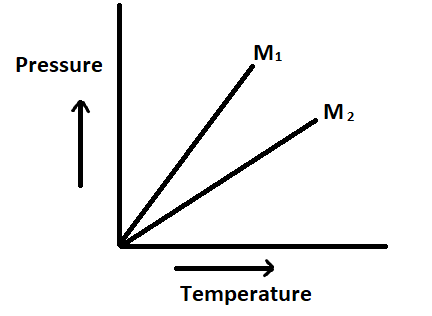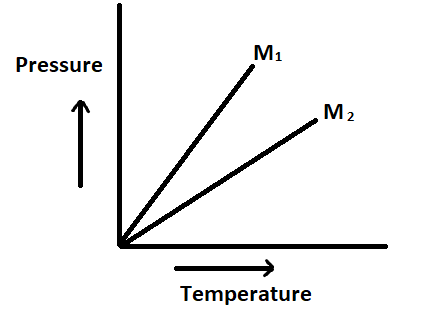
The molar gas constant is the same for all gases because at the same temperature and pressure, equal volumes of gases have the same

A) Number of molecules
B) Average potential energy
C) Ratio of specific heats
D) Density

Answer
556.5k+ views
Hint: We can use the ideal gas equation to find which quantity varies with the variation in volume. We can check how that quantity is dependent on volume, whether directly or inversely proportional. If it’s directly proportional then the variation in both the quantities will be alike and in case of inverse proportionality, the changes in both the quantities are opposite to each other.
Complete step by step answer:
According to the ideal gas equation, we have:
\[PV = nRT\;\] where, n is the number of moles, R is the universal gas constant and T is the temperature.
Number of moles (n) is the number of molecules (N) divided by the Avogadro’s number $\left( {{N_A}} \right)$.

$ \to n = \dfrac{N}{{{N_A}}}$
$ \Rightarrow PV = \dfrac{N}{{{N_A}}}RT$
So, for the value of volume, this can be written as:
$V = \dfrac{N}{{{N_A}}} \times \dfrac{{RT}}{P}$
It is given that the Pressure and temperature are the same for the gas that means they are constant. Every quantity except the number of molecules (N) on the R.H.S of the equation.
$ \Rightarrow V \propto N$
Volume is directly proportional to the number of molecules, with the increase in volume, it will increase and vice – versa.
Thus, for equal volume of gases, the number of molecules will also be equal.
So, the correct answer is “Option A”.
Note:
The question can also be directly answered by the Avogadro’s law:
It is given that the pressure and temperature of the gases are the same. So according to the Avogadro’s law, under same conditions of temperature and pressure the number of molecules are equal for equal volume of gases
Complete step by step answer:
According to the ideal gas equation, we have:
\[PV = nRT\;\] where, n is the number of moles, R is the universal gas constant and T is the temperature.
Number of moles (n) is the number of molecules (N) divided by the Avogadro’s number $\left( {{N_A}} \right)$.

$ \to n = \dfrac{N}{{{N_A}}}$
$ \Rightarrow PV = \dfrac{N}{{{N_A}}}RT$
So, for the value of volume, this can be written as:
$V = \dfrac{N}{{{N_A}}} \times \dfrac{{RT}}{P}$
It is given that the Pressure and temperature are the same for the gas that means they are constant. Every quantity except the number of molecules (N) on the R.H.S of the equation.
$ \Rightarrow V \propto N$
Volume is directly proportional to the number of molecules, with the increase in volume, it will increase and vice – versa.
Thus, for equal volume of gases, the number of molecules will also be equal.
So, the correct answer is “Option A”.
Note:
The question can also be directly answered by the Avogadro’s law:
It is given that the pressure and temperature of the gases are the same. So according to the Avogadro’s law, under same conditions of temperature and pressure the number of molecules are equal for equal volume of gases
Recently Updated Pages
A brick is kept in three different ways on a table class 11 physics CBSE

From what the organs and organ systems are made of class 11 biology CBSE

What is the importance of Meiosis class 11 biology CBSE

Explain the following A All ores are minerals but all class 11 chemistry CBSE

An examination a question paper consists of 12 questions class 11 maths CBSE

Distinguish between Gymnosperms and Angiosperms class 11 biology CBSE

Trending doubts
10 examples of friction in our daily life

One Metric ton is equal to kg A 10000 B 1000 C 100 class 11 physics CBSE

Difference Between Prokaryotic Cells and Eukaryotic Cells

1 Quintal is equal to a 110 kg b 10 kg c 100kg d 1000 class 11 physics CBSE

State the laws of reflection of light

Explain zero factorial class 11 maths CBSE




